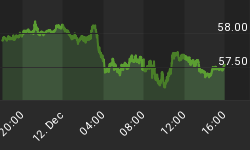No US GDP report is complete without an explanation from the Consumer Metrics Institute of how Washington is fooling us. The latest one is even scarier than usual:
There are a number of disturbing items in this report:
- Even at first glance this is not a good report. Although the headline number itself says "stagnation," in the context of earlier reports it shows an economy in dynamic transition from lackluster growth towards outright contraction. The overall headline number is down 2.5% from the prior quarter and down 4% from the next earlier quarter. These are significant changes, with the prior quarter's trend extended and the downward slope intensifying.
- Private commercial investment dropped substantially, led by reduced outlays for residential construction, transportation equipment and IT infrastructure.
- The year-long 2013 cycle of inventory building has come to an end. Over an extended time period inventories are mostly a cyclical zero-sum game, with excessive growth or contraction over any period being corrected (i.e., reversed) during a subsequent period. Moving forward we should expect that inventories will continue their cyclical contraction, with negative consequences to the headline number.
- Collapsing exports are likely confirming a weakening global economy. If so, exports are unlikely to provide the same kind of growth boost that they have provided during 2013, when they grew at about twice their historic rate.
- A positive contribution to the headline growth rate from imports is historically an inverse growth indicator, since it is usually a consequence of reduced domestic demand (e.g., positive import contributions were particularly notable during 2008 and early 2009, and again during the overall weak 4Q-2012).
- The Federal government's "shutdown" subtracted roughly 1% from the fourth quarter's reported growth rate. Since it is likely that some part of the reduced spending was actually only deferred (rather than foregone), we had expected a sharp "bounce-back" in Federal spending in 1Q-2014. While that did occur to some extent in the non-defense portions of the Federal budget, it was offset by ongoing cutbacks in defense spending and shrinking state and local expenditures on infrastructure.
- Although real household income improved somewhat (at a respectable real 1.22% annualized rate), it is still below levels seen in the fourth quarter of 2012. It bears repeating that total aggregate real per-capita income growth since the second quarter of 2008 has been just 1.04% -- an average annualized growth rate of just 0.19% during the entire "recovery." The household savings rate is down over 2.5% since the fourth quarter of 2012, and it remains well below the historical long term savings rate.
- The growth in consumer spending was caused by increased household costs for non-discretionary services -- healthcare, housing, utilities and financial services (e.g., rising interest rates). Spending on goods remained essentially flat, with the "growth" in consumer services spending coming once again mostly out of savings -- which is unsustainable over the long haul.
- Most of the increasing spending on services was channeled/transferred to large-cap corporate America. Discretionary spending at shops on "Main Street" America -- the quickest source of economic growth or new jobs -- is under renewed (and probably unrelenting) pressure.
- The headline growth rate is likely enhanced by an understatement of inflation. Even using BLS data to "deflate" the nominal data results in a contracting headline number, while using data from the BPP to deflate the data results in an eye-opening -2.5% contraction rate.
Enjoy this (barely) positive headline number while it lasts. Even if it survives the next two months of revisions, the economic momentum signaled by the past two quarters will likely carry the headline number into the red in the very near future.
Wow, that's a lot of bad news under the surface of what was already a disappointing headline. Especially interesting is the size of the drop in GDP the US would have seen if it was using honest inflation numbers. Which is no doubt why we don't use honest numbers.
Now the question is how much of this multi-faceted weakness was weather-related and destined to be reversed when the Spring sun brings out all the latent shoppers and home buyers. Time will tell. But for now, the contrast between a stalling economy and soaring stock prices is pretty striking.
















